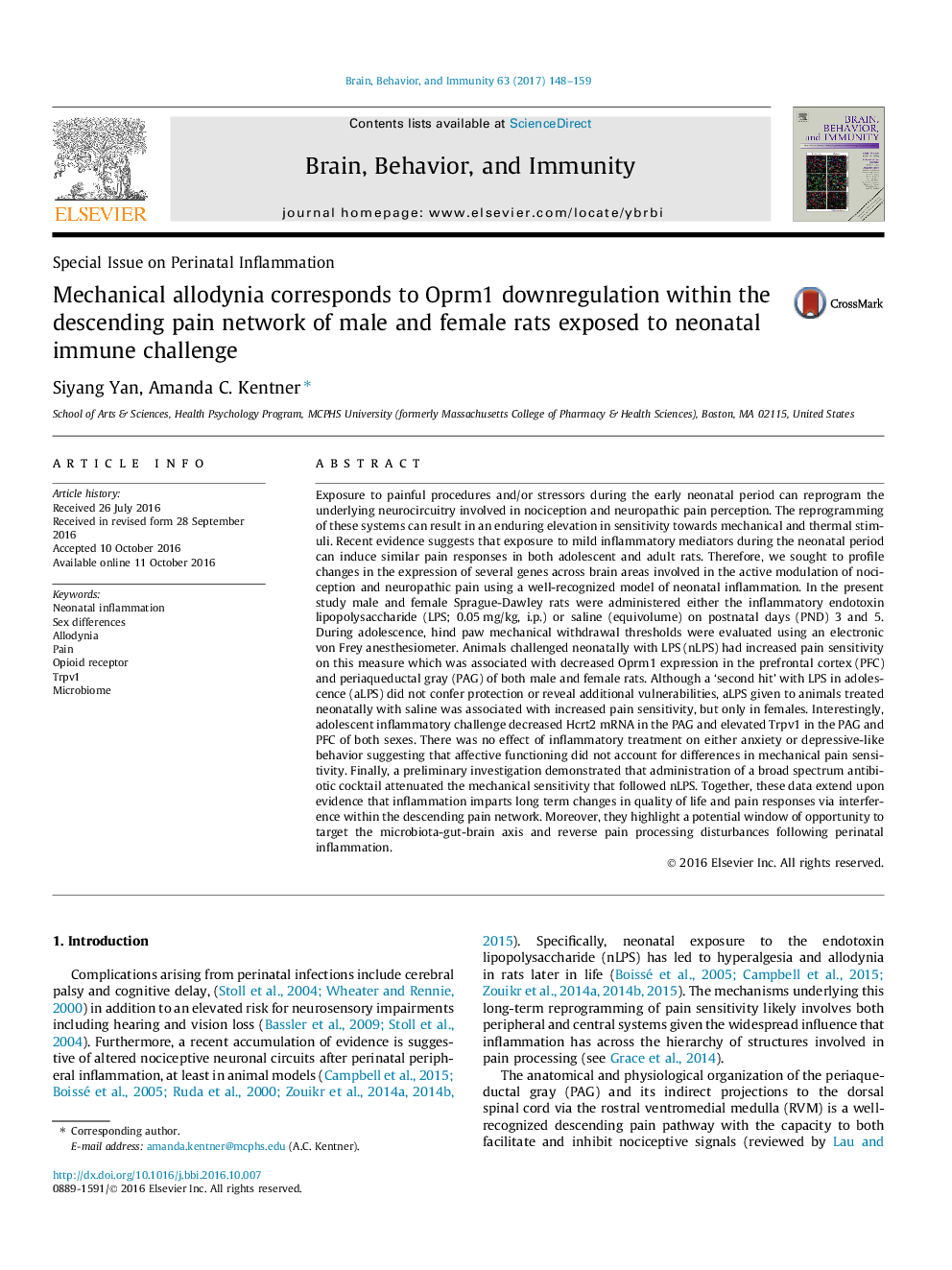| کد مقاله | کد نشریه | سال انتشار | مقاله انگلیسی | نسخه تمام متن |
|---|---|---|---|---|
| 5040670 | 1473904 | 2017 | 12 صفحه PDF | دانلود رایگان |

- Neonatal lipopolysaccharide (nLPS) increased mechanical pain sensitivity in male and female rats.
- nLPS induced decreased Oprm1 in the prefrontal cortex (PFC) and periaqueductal gray (PAG) of both sexes.
- Antibiotic treatment reversed pain sensitivity associated with nLPS.
Exposure to painful procedures and/or stressors during the early neonatal period can reprogram the underlying neurocircuitry involved in nociception and neuropathic pain perception. The reprogramming of these systems can result in an enduring elevation in sensitivity towards mechanical and thermal stimuli. Recent evidence suggests that exposure to mild inflammatory mediators during the neonatal period can induce similar pain responses in both adolescent and adult rats. Therefore, we sought to profile changes in the expression of several genes across brain areas involved in the active modulation of nociception and neuropathic pain using a well-recognized model of neonatal inflammation. In the present study male and female Sprague-Dawley rats were administered either the inflammatory endotoxin lipopolysaccharide (LPS; 0.05Â mg/kg, i.p.) or saline (equivolume) on postnatal days (PND) 3 and 5. During adolescence, hind paw mechanical withdrawal thresholds were evaluated using an electronic von Frey anesthesiometer. Animals challenged neonatally with LPS (nLPS) had increased pain sensitivity on this measure which was associated with decreased Oprm1 expression in the prefrontal cortex (PFC) and periaqueductal gray (PAG) of both male and female rats. Although a 'second hit' with LPS in adolescence (aLPS) did not confer protection or reveal additional vulnerabilities, aLPS given to animals treated neonatally with saline was associated with increased pain sensitivity, but only in females. Interestingly, adolescent inflammatory challenge decreased Hcrt2 mRNA in the PAG and elevated Trpv1 in the PAG and PFC of both sexes. There was no effect of inflammatory treatment on either anxiety or depressive-like behavior suggesting that affective functioning did not account for differences in mechanical pain sensitivity. Finally, a preliminary investigation demonstrated that administration of a broad spectrum antibiotic cocktail attenuated the mechanical sensitivity that followed nLPS. Together, these data extend upon evidence that inflammation imparts long term changes in quality of life and pain responses via interference within the descending pain network. Moreover, they highlight a potential window of opportunity to target the microbiota-gut-brain axis and reverse pain processing disturbances following perinatal inflammation.
Journal: Brain, Behavior, and Immunity - Volume 63, July 2017, Pages 148-159